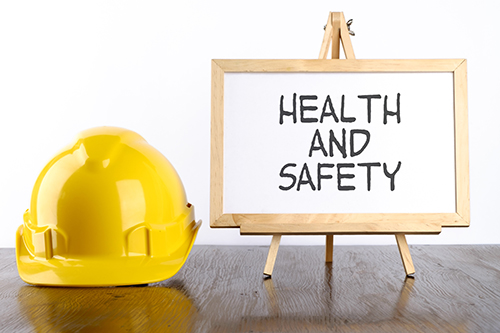Understanding The Workplace Health, Safety And Welfare Regulations 1992

Why the Workplace Health Safety and Welfare Regulations Matter for Your Business
The Workplace Health, Safety and Welfare Regulations 1992 are essential for businesses, as they establish comprehensive standards to ensure employee well-being and operational efficiency. Key aspects include:
• Health Provisions: Mandating adequate ventilation, comfortable temperatures (minimum 16°C for general work, 13°C for physical tasks), proper lighting, cleanliness, and sufficient workspace.
• Safety Measures: Requiring regular maintenance of equipment, safe traffic routes, prevention of falls into hazardous substances, and secure design of windows and doors.
• Welfare Facilities: Ensuring access to appropriate sanitary conveniences, washing facilities, and rest areas.
Adherence to these regulations not only fulfills legal obligations but also fosters a safer, more productive workplace, enhancing employee morale and reducing potential liabilities.
The UK has a long history of ensuring health and safety in the workplace, 220 years of it, to be exact. Under the Workplace Health, Safety and Welfare Regulations 1992, employers have a duty to ensure the health, safety and welfare of their employees.
The Workplace Health, Safety and Welfare Regulations 1992 cover a range of health and safety issues that apply to the majority of workplaces (with the exception of construction sites, ships and below-ground mines).
Indoor working temperatures should be comfortable, and should be a minimum of 16 °C, although if physical work is taking place, there should be a minimum temperature of 13 °C.
Consideration needs to be made for those who may be working in cold or hot environments. A risk assessment can help identify personal and environmental factors, and may indicate the need for protective workwear to help mitigate the risks.
Steps need to be taken to prevent people from falling into dangerous substances. Fencing and covers are some of the measures that can be taken to provide protection to workers.
Windows and transparent doors, gates, etc. should be made from safe materials to protect against breakage. They should also feature markings to help make people aware of their presence if there is a risk of someone coming into contact with them.
Workers should have access to adequate supplies of drinking water, with alternatives such as bottles or water dispensers being available if it can’t be supplied via a main source.
There should be secure and suitable spaces for workers to store their own clothing, and changing facilities for those who need to change into special workwear. These facilities should ensure privacy and should include seating too.
Employees should have access to suitable rest facilities, including seating and should be in places which are large enough to accommodate the number of employees using them. There should be facilities for eating if workers eat meals at work, and these should include facilities for either preparing or obtaining hot drinks. If hot food isn’t available, workers should be given facilities to heat their food.
This is just an overview of the regulations, with more detail available on the Health and Safety Executive’s website.
The Workplace Health, Safety and Welfare regulations are in place to help employees protect their employees while at work. It’s important that you adhere to the regulations and take steps to maintain health, safety and welfare at work.
Providing protective workwear is one of the ways you can help adhere to the Workplace Health, Safety and Welfare Regulations – ensuring your workers are protected from hazards, as well as keeping them warm, dry and comfortable at work. At phs Besafe, we provide a range of protective clothing, including flame gear, bright gear and foul gear. We also provide a workwear laundry and maintenance service to help you maintain your garments.